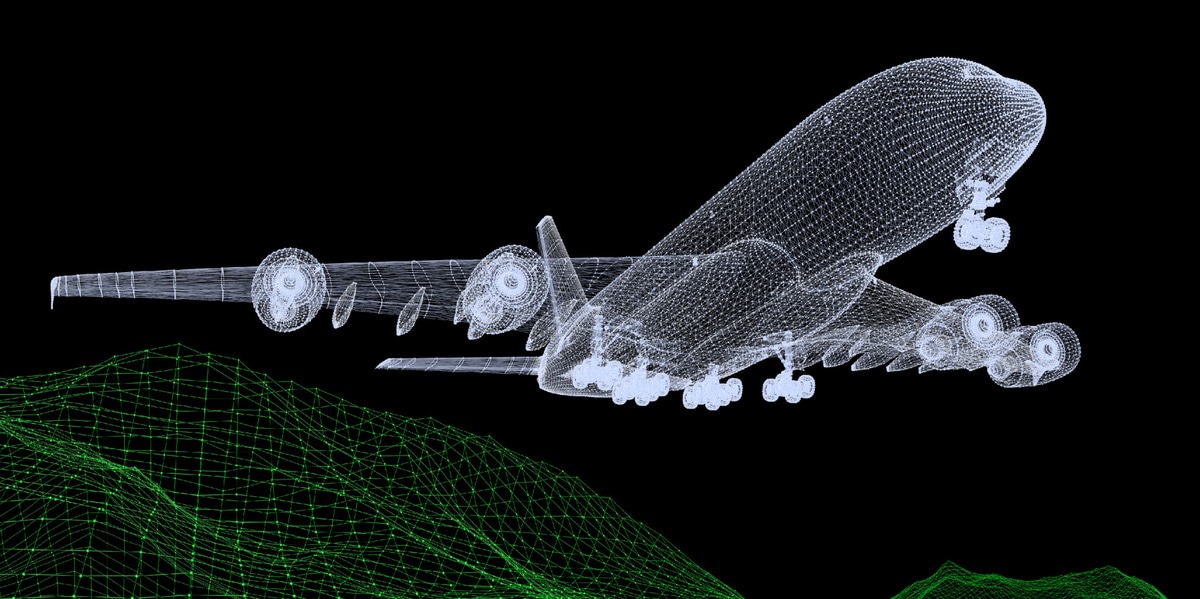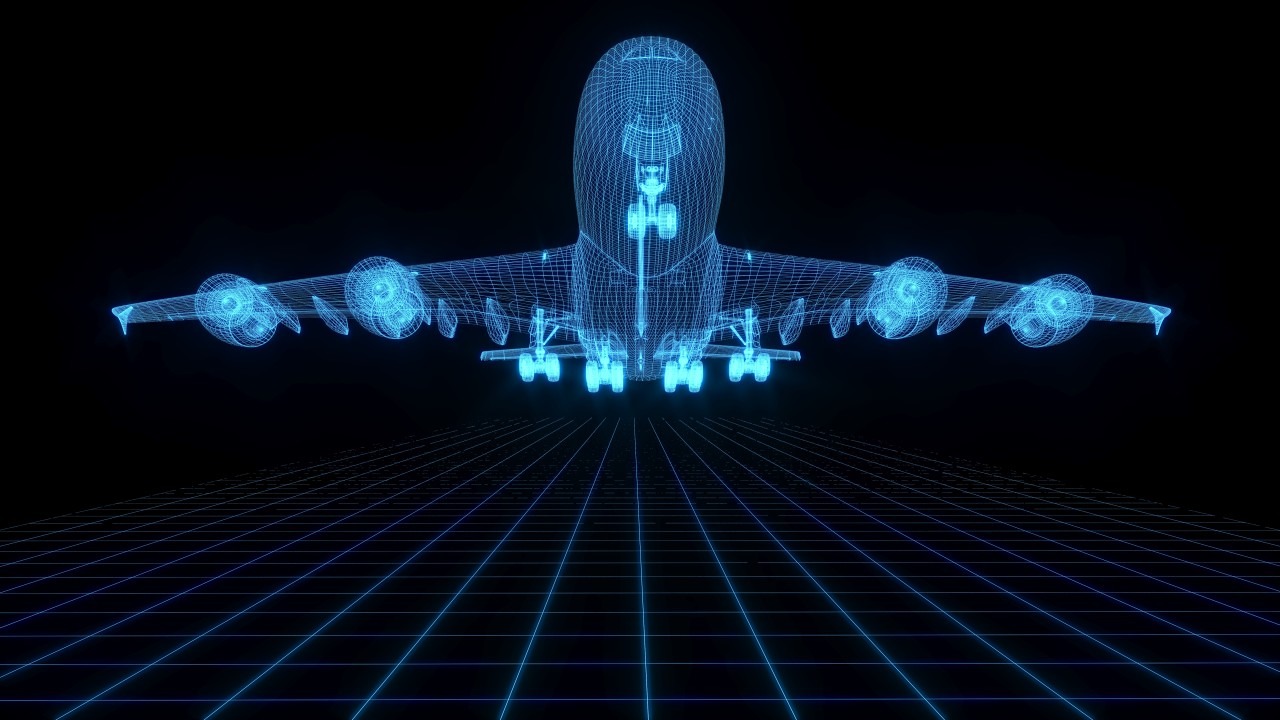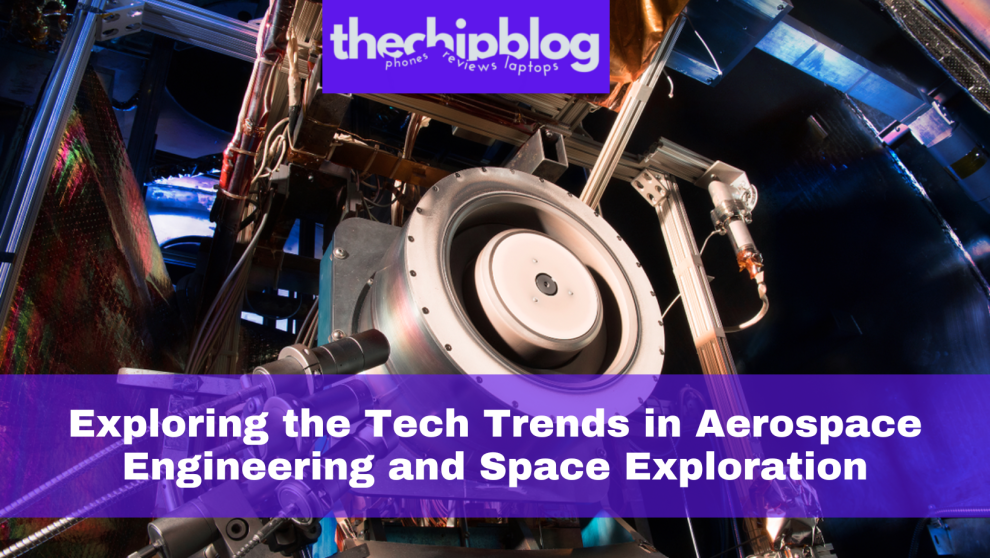As we soar into the future, the aerospace and space exploration industries are undergoing a remarkable transformation, propelled by groundbreaking technological advancements. These industries, once considered the domain of government-funded behemoths, are now witnessing an influx of private companies and startups, fueling a new era of innovation and competition. In this article, we’ll delve into the captivating tech trends in aerospace engineering and space exploration, unveiling the cutting-edge developments that are shaping the future of these awe-inspiring fields.
What are the Latest Propulsion Systems Revolutionizing Space Travel?
One of the most significant tech trends in aerospace engineering and space exploration revolves around propulsion systems. Traditional chemical rockets, while reliable, are limited in their efficiency and payload capabilities. Researchers and engineers are actively exploring alternative propulsion methods that could revolutionize space travel.
Electric Propulsion: Electric propulsion systems, such as ion engines and Hall effect thrusters, offer a more efficient and environmentally friendly alternative to chemical rockets. By accelerating charged particles using electric or electromagnetic fields, these systems provide a steady, low-thrust propulsion that can significantly extend the operational lifespan of spacecraft and enable ambitious deep-space missions.
Nuclear Thermal Propulsion: Nuclear thermal propulsion systems leverage the immense energy generated by nuclear fission reactions to heat and expel propellant at extraordinarily high velocities. This technology promises to significantly reduce travel times for future missions to Mars and beyond, making long-distance space exploration more feasible and cost-effective.
How are Advanced Materials Transforming Aerospace Engineering?
The development of advanced materials is a pivotal tech trend in aerospace engineering and space exploration, enabling the creation of stronger, lighter, and more durable structures. These materials not only enhance performance but also contribute to cost savings and increased payload capacities.
Composite Materials: Composite materials, such as carbon fiber-reinforced polymers (CFRPs) and ceramic matrix composites (CMCs), offer exceptional strength-to-weight ratios and resistance to extreme temperatures. These properties make them ideal for aircraft and spacecraft components, including fuselages, wings, and heat shields, enabling more efficient and robust designs.
Metamaterials: Metamaterials, engineered to possess unique properties not found in natural materials, are opening up new possibilities in aerospace engineering. For example, researchers are exploring the use of metamaterials for advanced cloaking techniques, reducing the radar cross-section of aircraft, and developing lightweight yet ultra-strong structures.
What Role do Additive Manufacturing and 3D Printing Play in Space Exploration?
Additive manufacturing, more commonly known as 3D printing, has emerged as a game-changer in the tech trends in aerospace engineering and space exploration. This technology offers unprecedented flexibility and efficiency in manufacturing intricate components and structures.
In-Situ Resource Utilization: One of the most exciting applications of 3D printing in space exploration is in-situ resource utilization (ISRU). By leveraging the materials available on celestial bodies, such as lunar regolith or Martian soil, future missions could 3D print tools, spare parts, and even habitats, reducing the need for extensive supply chains and enabling more self-sustaining exploration.
Rapid Prototyping and Customization: 3D printing allows for rapid prototyping and customization of aerospace components, streamlining the design and testing processes. Engineers can quickly iterate and refine designs, accelerating innovation and reducing development costs.

How are Artificial Intelligence and Machine Learning Impacting Aerospace Engineering?
Artificial intelligence (AI) and machine learning (ML) are revolutionizing various aspects of the tech trends in aerospace engineering and space exploration, from design and simulation to autonomous systems and mission planning.
Design Optimization: AI and ML algorithms can analyze vast amounts of data and identify intricate patterns, enabling engineers to optimize aircraft and spacecraft designs for factors such as aerodynamics, structural integrity, and fuel efficiency. This accelerates the design process and leads to more efficient and reliable systems.
Autonomous Systems: The integration of AI and ML into autonomous systems is a rapidly evolving trend in aerospace engineering. Unmanned aerial vehicles (UAVs), spacecraft, and rovers can navigate complex environments, make real-time decisions, and adapt to changing conditions without human intervention, enhancing mission capabilities and safety.
Predictive Maintenance: By leveraging machine learning algorithms and sensor data, aerospace engineers can implement predictive maintenance strategies, identifying potential issues before they occur. This proactive approach minimizes downtime, reduces maintenance costs, and increases the operational lifespan of aerospace assets.
How is Satellite Technology Advancing Space Exploration and Earth Observation?
Satellite technology has been a cornerstone of space exploration and Earth observation for decades, and the tech trends in this area continue to push boundaries.
Smallsat Constellations: The advent of smallsat constellations, consisting of numerous small and relatively inexpensive satellites working in tandem, has revolutionized Earth observation and communication capabilities. These constellations provide high-resolution imagery, real-time data, and global coverage, enabling applications ranging from environmental monitoring to precision agriculture and disaster response.
Quantum Communication: Researchers are exploring the potential of quantum communication in satellite networks, leveraging the principles of quantum mechanics to transmit information securely and with unprecedented accuracy. This technology could enable hack-proof communication channels and revolutionize fields such as global navigation and positioning.
What Role does Renewable Energy Play in Aerospace Engineering and Space Exploration?
As the demand for sustainable practices grows, the aerospace industry is embracing renewable energy sources to power its operations and reduce its environmental impact.
Solar Power: Solar energy has long been a staple in space exploration, powering satellites, rovers, and even the International Space Station. However, recent advances in photovoltaic technology and energy storage solutions have made solar power more viable for terrestrial aerospace applications, such as powering aircraft and ground support equipment.
Hydrogen Fuel Cells: Hydrogen fuel cells are emerging as a promising alternative to traditional aviation fuels. By combining hydrogen and oxygen to produce electricity, fuel cells offer a clean and efficient power source with zero direct emissions. Several aircraft manufacturers and airlines are exploring the integration of hydrogen fuel cells into their future aircraft designs.
How are Virtual and Augmented Reality Enhancing Training and Operations?
Virtual reality (VR) and augmented reality (AR) technologies are transforming various aspects of the tech trends in aerospace engineering and space exploration, from training and simulation to maintenance and operations.
Immersive Training: VR and AR simulations provide realistic and immersive training environments for pilots, astronauts, and ground crew. These simulations can recreate high-risk scenarios, allowing trainees to gain valuable experience without the associated risks and costs of real-world training.
Augmented Maintenance and Operations: AR technology overlays digital information onto the physical world, enhancing maintenance and operational procedures. Technicians can access real-time data, step-by-step instructions, and visualizations, improving efficiency, accuracy, and safety during complex tasks.
What are the Latest Developments in Space Robotics and Automation?
Space robotics and automation are crucial tech trends in aerospace engineering and space exploration, enabling more efficient and ambitious missions while reducing human risk.
Robotic Explorers: Robotic explorers, such as the Mars rovers Perseverance and Curiosity, are at the forefront of space exploration. These highly advanced robots can navigate and study hostile environments, collect data, and perform scientific experiments, paving the way for future human exploration.
Autonomous Assembly and Manufacturing: As space exploration ventures further into deep space, the ability to autonomously assemble and manufacture structures and components will become increasingly important. Researchers are developing robotic systems capable of 3D printing structures, assembling modular components, and performing repairs in space, reducing the need for extensive human intervention.

How is Cybersecurity Crucial for Aerospace Engineering and Space Exploration?
With the increasing reliance on digital systems and interconnectivity, cybersecurity has become a critical concern in the tech trends of aerospace engineering and space exploration.
Securing Critical Infrastructure: Aerospace and space systems are vulnerable to cyberattacks that could compromise mission operations, data integrity, and even human safety. Robust cybersecurity measures, including advanced encryption, access control, and threat detection mechanisms, are essential to protect these critical systems from malicious actors.
Secure Communication Networks: As space exploration extends beyond Earth’s orbit, secure and reliable communication networks become paramount. Quantum cryptography and other advanced security protocols are being explored to ensure the confidentiality and integrity of data transmissions between spacecraft, ground stations, and mission control centers.
What Impact will Commercialization and Private Space Exploration Have?
The commercialization of space and the rise of private space exploration companies are reshaping the landscape of tech trends in aerospace engineering and space exploration.
NewSpace: The term “NewSpace” refers to the growing number of private companies and startups entering the space industry, challenging traditional government-led space programs. These companies are driving innovation, reducing costs, and democratizing access to space through innovative technologies and business models.
Space Tourism: With companies like SpaceX, Blue Origin, and Virgin Galactic leading the charge, space tourism is becoming a reality. As more private companies offer suborbital and orbital flights, the demand for advanced propulsion systems, reusable spacecraft, and specialized passenger accommodations will continue to grow.
Asteroid Mining and Resource Extraction: The potential for asteroid mining and resource extraction has captured the attention of private space companies. By leveraging advanced robotics and in-situ resource utilization technologies, these companies aim to unlock valuable resources from asteroids and other celestial bodies, opening new commercial opportunities in space.
In conclusion, the tech trends in aerospace engineering and space exploration are rapidly evolving, driven by groundbreaking innovations and a renewed sense of excitement and ambition. From propulsion systems that defy conventional limits to advanced materials and manufacturing techniques, these trends are reshaping the way we explore the cosmos and expanding the boundaries of human ingenuity. As we embark on this exciting journey, one thing is certain: the future of aerospace engineering and space exploration promises to be more remarkable and awe-inspiring than ever before.
















Add Comment